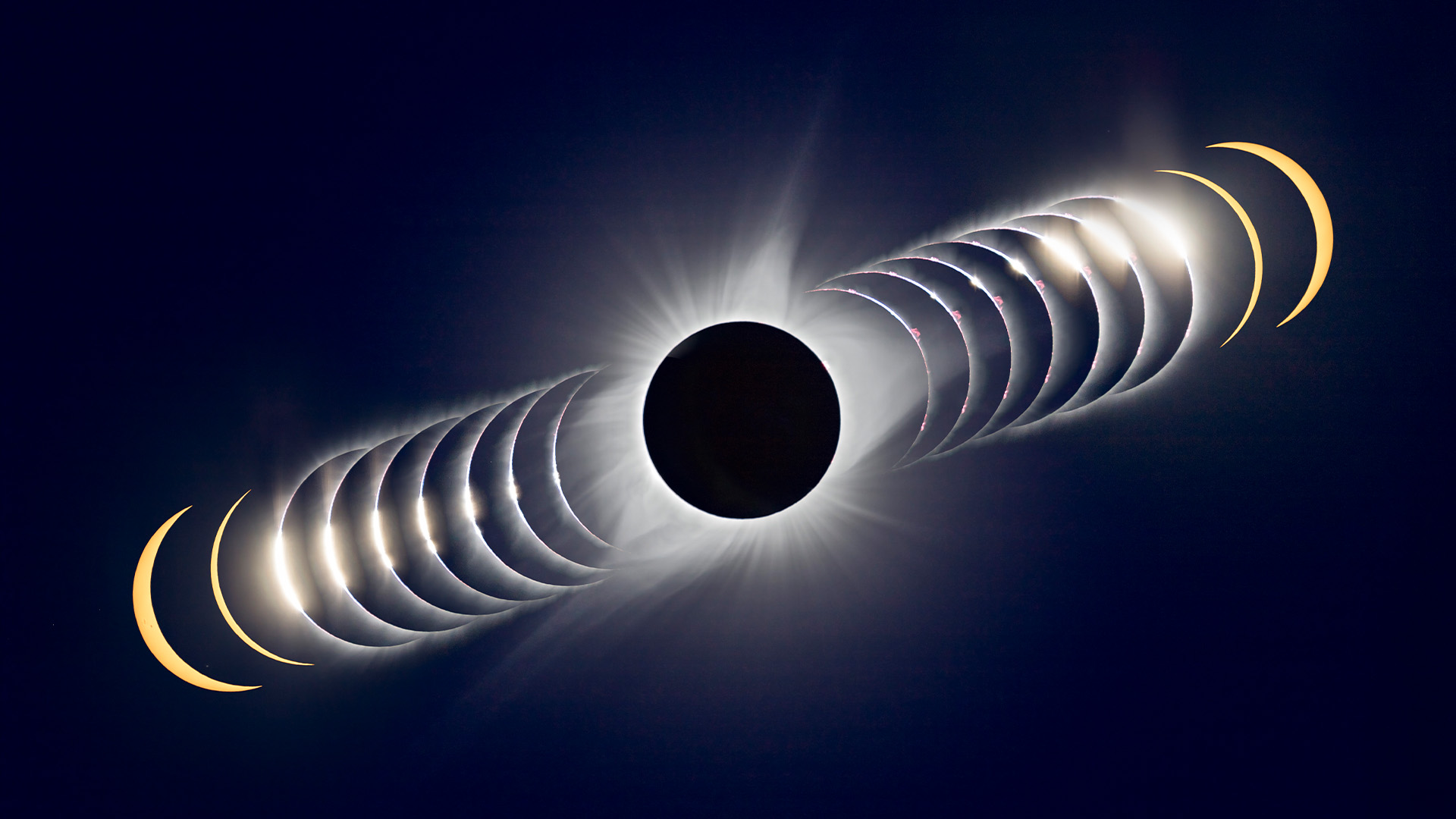
Today (April 8), a total solar eclipse will plunge parts of 15 U.S. states into sudden darkness as the moon's enormous shadow sweeps across the continent.
Crossing northeast from Mexico to Canada over the course of several hours, the April 8 total solar eclipse will be visible to an estimated 44 million people who live in the path of totality — the path of the moon's shadow, and the only place where the total phase of the eclipse will be visible — while a partial eclipse will be visible across nearly the entire U.S.
Here's everything you need to know about solar eclipses, and how to safely view today's spectacular celestial event safely.
What is a total solar eclipse?
A total solar eclipse occurs when the moon passes directly between Earth and the sun. From our perspective, the moon appears to block the sun's entire face, projecting its vast shadow onto our planet. While the moon gets between Earth and the sun every month during its new moon phase, it takes a precise combination of factors for this to result in a solar eclipse.
Where to see the April 8 total solar eclipse
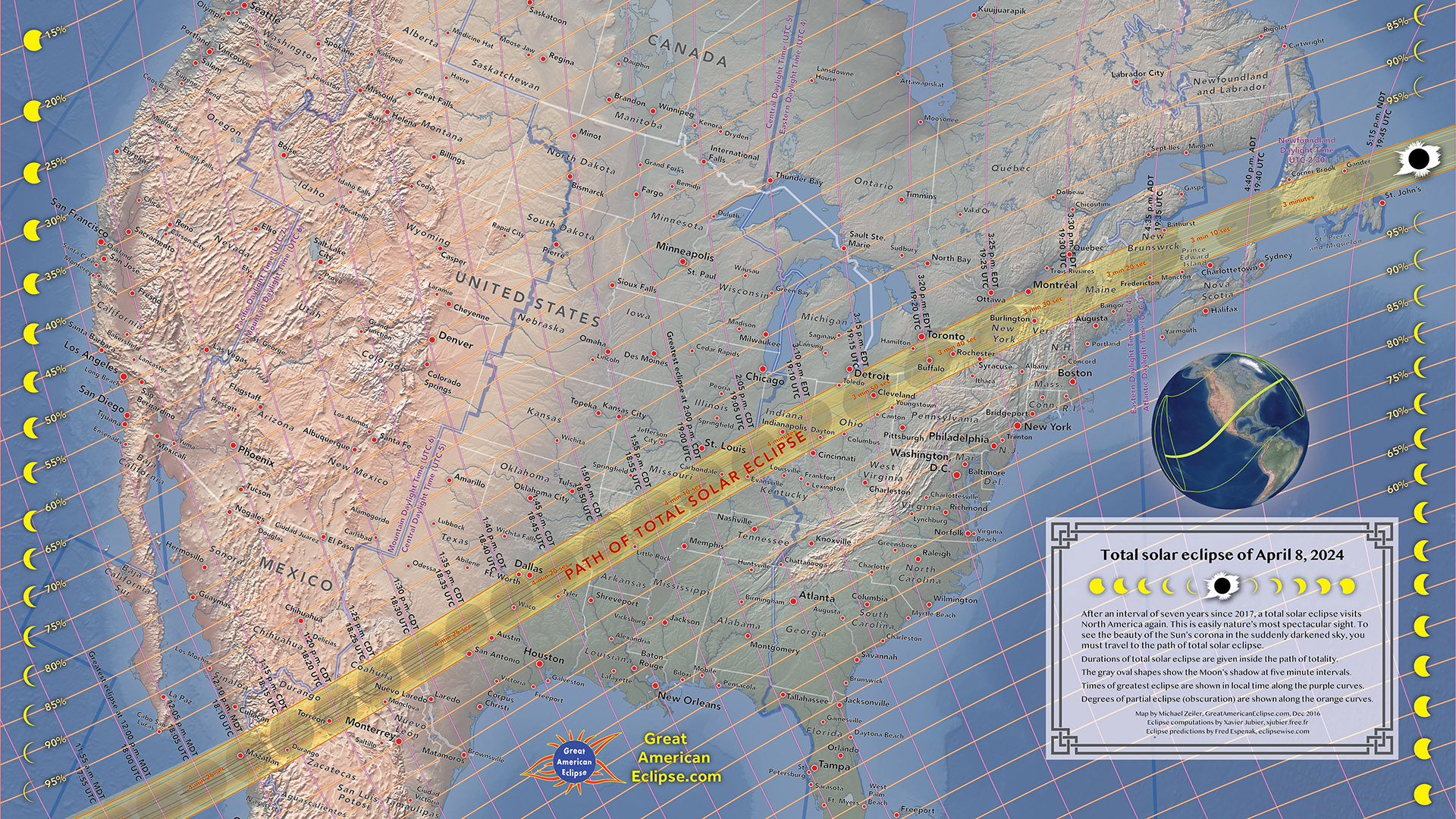
The total eclipse will only be visible along the 115-mile-wide (185 kilometers), 10,000-mile-long (16,000 km) path of totality. The path begins in Sinaloa, Mexico, crosses 15 U.S. states, then passes through the Canadian provinces of Ontario, Quebec, New Brunswick, Nova Scotia, Prince Edward Island and Newfoundland before leaving the continent.
The U.S. states where totality will be visible are Texas, Oklahoma, Arkansas, Missouri, Kentucky, Tennessee, Illinois, Indiana, Ohio, Michigan, Pennsylvania, New York, Vermont, New Hampshire and Maine — although Tennessee and Michigan will only be glanced by the moon's shadow.
Only in these states will the total phase of the eclipse be visible; and even in these states, you will need to be within the path of totality to see the total eclipse. The closer you can get to the center of the path of totality, and the further southwest you are, the longer totality will be visible for, with a maximum duration of 4 minutes, 27 seconds in Torreón, Mexico. For more information on the length and time of totality in various cities, check out the Great American Eclipse website.
Related: 10 weird things that happen during a solar eclipse
Where will the partial eclipse be visible?
The partial phase of the eclipse will be visible to some extent across the entire contiguous United States, ranging from a 99% partial eclipse in areas just outside the path of totality to a 15% partial eclipse far to the northwest of the path. Here's what you can expect to see in your location.
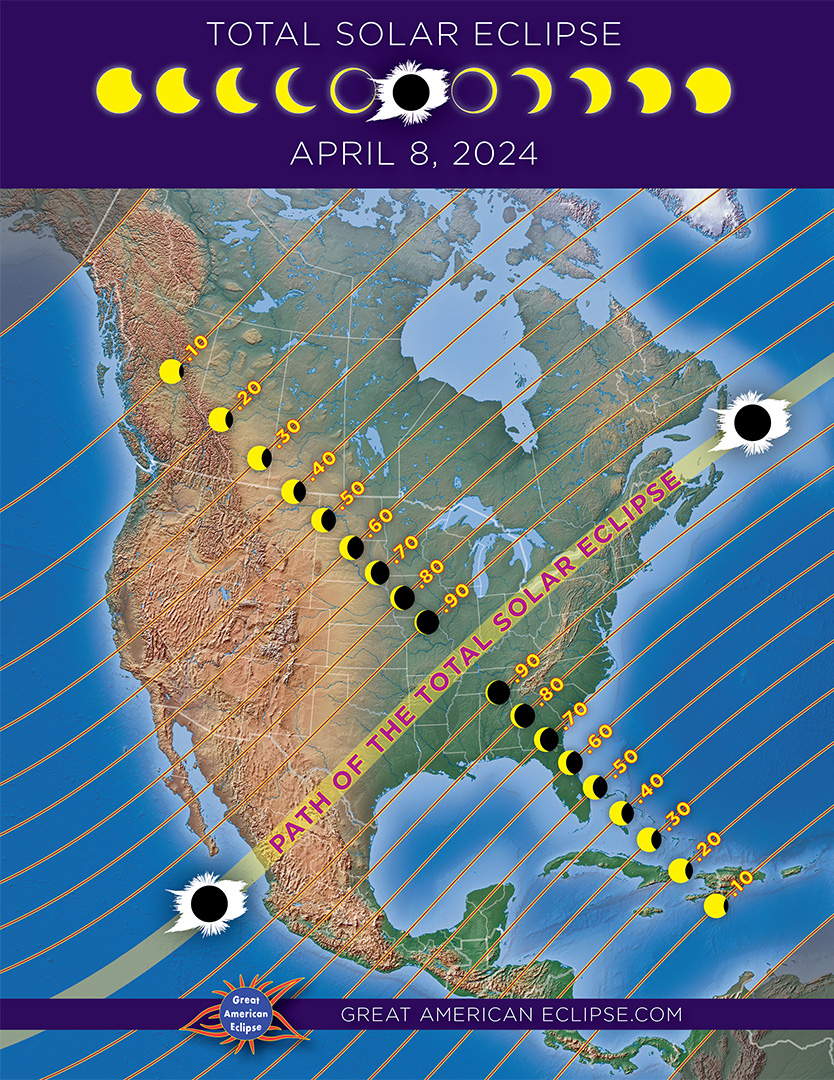
Where can I find maps of the solar eclipse?
If you are unsure exactly where the path of totality will cross, how much you will see if you are outside this path, or how much time you need to drive to the point of totality, these solar eclipse maps will help you plan your experience.
How to safely view the eclipse
To view the partial phases of the eclipse you MUST wear protective eyewear, such as a pair of ISO-certified solar eclipse glasses, at all times. This is true whether or not you are in the path of totality.
To be clear: No matter where you are on April 8, NEVER LOOK DIRECTLY AT THE PARTIAL ECLIPSE without protective eyewear, or you could risk permanent eye damage.
The ONLY TIME it is safe to look at the eclipse with the naked eye is during the few minutes of totality, when the sun's face is completely blocked by the moon, according to NASA. Only viewers within the path of totality will be able to remove their solar glasses to experience this moment.
Other safe ways to view the partial phase of the eclipse include using a handheld eclipse viewer, looking through a solar telescope or binoculars equipped with a solar filter, or watching a NASA livestream from home.
Related: 7 safe ways to view the partial phases of the total solar eclipse
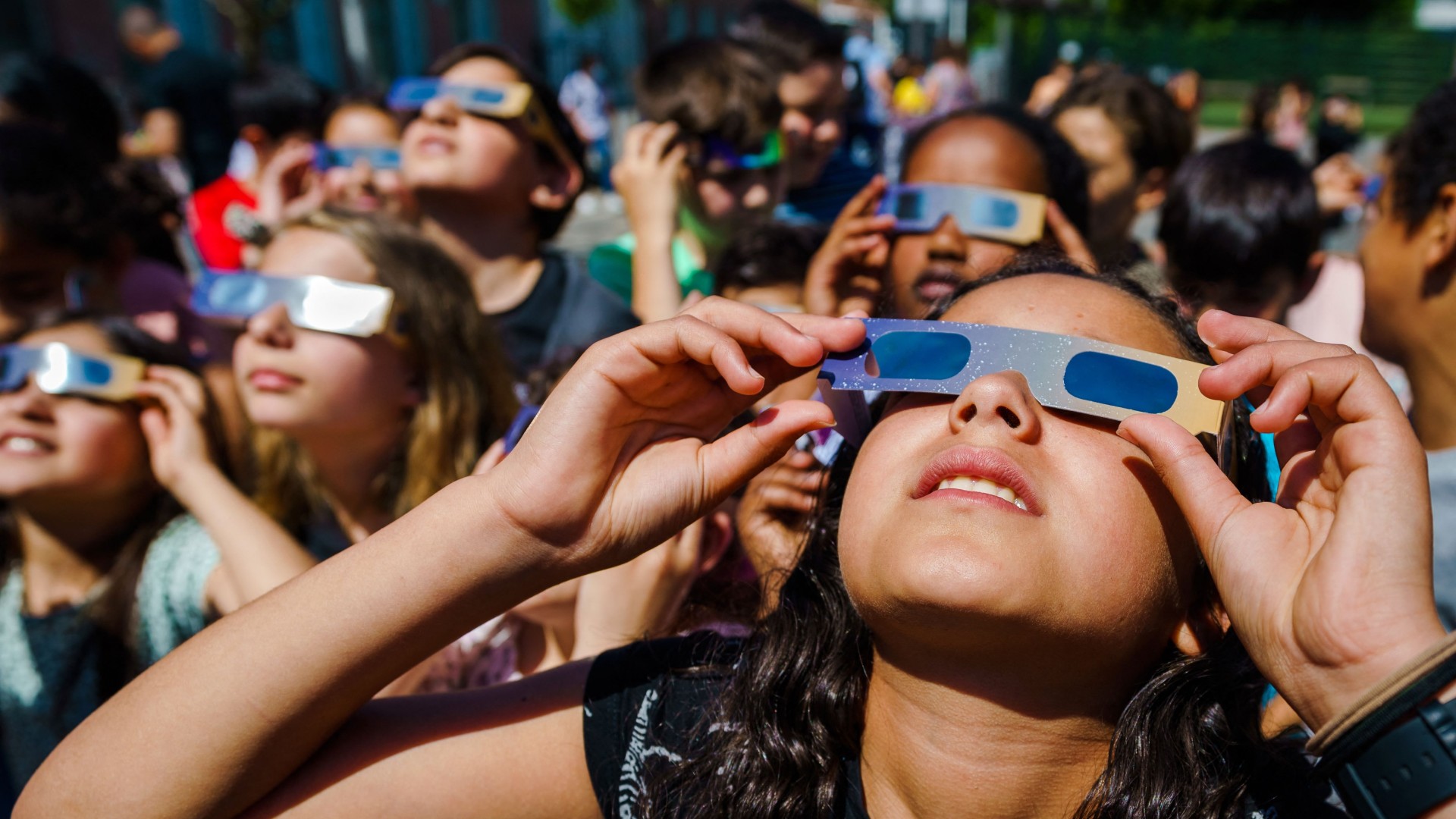
Can I record the eclipse with my phone?
Yes, it is possible to record parts of the eclipse successfully on your phone, but it does come with risks to both your camera and potentially your own eyesight, especially during the partial phases of the where you run the risk of accidentally looking at the sun while you are trying to line up your shot. This is why when setting up your camera it is advisable to wear solar glasses even when you are not looking directly at the sun.
The only safe way to take an image of a partial eclipse is to use the same type of filter as those found in solar eclipse glasses, or a ready-made smartphone solar filter.
The only time it is safe to take photos of the eclipse without a filter is during the brief period of totality, but there are a number of things you can do at this point to help you take the best possible photos and video of the eclipse on your smartphone.
What time does the eclipse start?
The eclipse makes landfall at Mazatlán, Sinaloa, at 9:51 a.m. local time (12:51 p.m. EDT), according to Time and Date. The moon's shadow will cross the continent for several hours before reaching the sea near the Canadian province of Newfoundland and Labrador at 5:16 p.m. local time (3:46 p.m. EDT).
Here is when totality will occur in the 13 states where it will be widely visible.
What will happen during totality?
Depending on how clear the skies are, totality could bring a parade of strange phenomena with it.
As the moon's shadow approaches, there'll be a significant drop in temperature, usually between 5 to 10 degrees Fahrenheit (2.8 to 5.6 degrees Celsius). As the ground cools, low-level clouds may disappear.
About 30 seconds before totality, wavy lines known as shadow bands may appear on the sides of buildings and vehicles. Just a few seconds before totality, look up (while wearing your eclipse glasses) and you may see Bailey's beads appear around the edge of the moon; these dazzling dots are the last bits of sunlight peeking through the mountains on the moon.
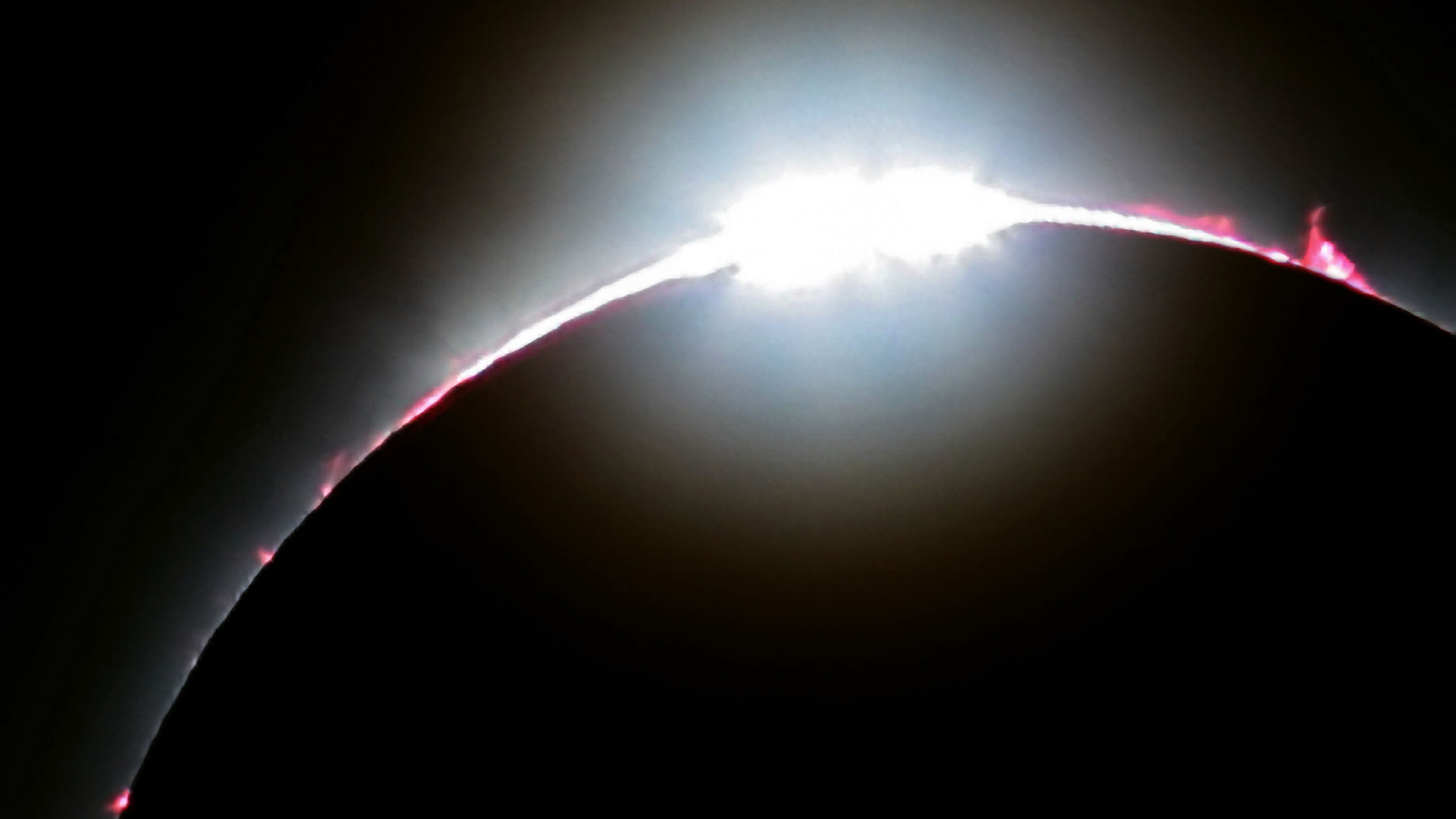
If the skies are clear, totality will bring a wall of darkness that turns midday to twilight. Only then can you remove your eclipse glasses. Bright stars and planets may be visible in the darkened sky, while a 360-degree sunset may appear on the horizon. Animals may act strangely, growing eerily quiet and assuming their nighttime behaviors. Colors will look different, with greens and blues popping while reds look dimmer. When the sun is fully eclipsed, its corona, or outer atmosphere, will be clearly visible behind the dark moon.
After a few minutes, totality will end, and you must put your eclipse glasses on again.
What if it's cloudy out?
Various eclipse phenomena will still be visible, depending on the extent and type of cloud cover in the area. Here's more information on what to expect if there are clouds around on the day.
How often do total solar eclipses occur?
Total solar eclipses aren't rare; they happen somewhere on Earth every 18 months, on average. However, it's rare that a total solar eclipse is visible from a populated area, and rarer still for an eclipse to cross North America.
The last total solar eclipse in the United States was on Aug. 21, 2017, sweeping westward across 14 states from Oregon to South Carolina. A total solar eclipse occurs in the same place on Earth once every 366 years, on average.
When is the next solar eclipse in North America?
The next total solar eclipse visible in North America occurs on March 30, 2033 — however, only parts of Alaska will see totality.
A total solar eclipse on Aug. 22, 2044, will be visible in parts of Montana and North Dakota. Another total eclipse less than one year later, on Aug. 12, 2045, will be visible from northern California, Nevada, Utah, Colorado, Kansas, Oklahoma, Arkansas, Mississippi, Alabama and Florida.







